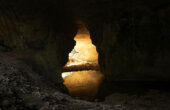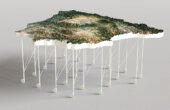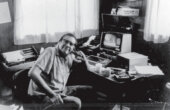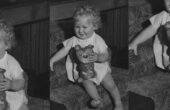J.G. Ballard: My Favorite Books
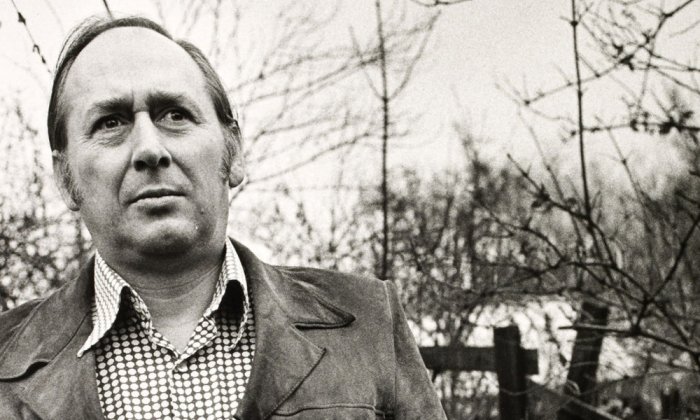
J. G. Ballard (1930-2009) was a colossal figure in English literature and an imaginative force of the 20th century. Alongside seminal novels — from the notorious “Crash” (1973) to the semi-autobiographical “Empire of the Sun” (1984) — Ballard was a sought-after reviewer and commentator, publishing journalism, memoir, and cultural criticism in a variety of forms. The following essay, in which Ballard reflects on the evolving impact of literature throughout his life, is excerpted from a new volume that collects the most significant short nonfiction of Ballard’s 50-year career.
As I grow older — I’m now in my early 60s — the books of my childhood seem more and more vivid, while most of those that I read 10 or even five years ago are completely forgotten. Not only can I remember, half a century later, my first readings of “Treasure Island and Robinson Crusoe,” but I can sense quite clearly my feelings at the time — all the wide-eyed excitement of a seven-year-old, and that curious vulnerability, the fear that my imagination might be overwhelmed by the richness of these invented worlds. Even now, simply thinking about Long John Silver or the waves on Crusoe’s island stirs me far more than reading the original text. I suspect that these childhood tales have long since left their pages and taken on a second life inside my head.
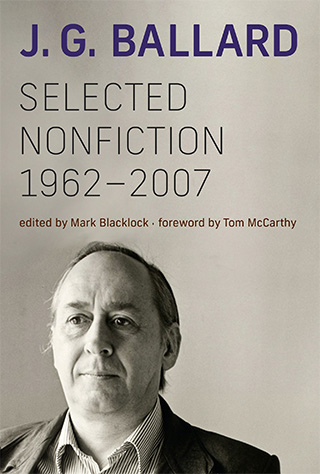
By contrast, I can scarcely recall what I read in my 30s and 40s. Like many people of my age, my reading of the great works of Western literature was over by the time I was 20. In the three or four years of my late teens I devoured an entire library of classic and modern fiction, from Cervantes to Kafka, Jane Austen to Camus, often at the rate of a novel a day. Trying to find my way through the grey light of postwar, austerity Britain, it was a relief to step into the rich and larger-spirited world of the great novelists. I’m sure that the ground-plan of my imagination was drawn long before I went up to Cambridge in 1949.
In this respect I differed completely from my children, who began to read (I suspect) only after they had left their universities. Like many parents who brought up teenagers in the 1970s, it worried me that my children were more interested in going to pop concerts than in reading “Pride and Prejudice” or “The Brothers Karamazov” — how naive I must have been. But it seemed to me then that they were missing something vital to the growth of their imaginations, that radical reordering of the world that only the great novelists can achieve.
I now see that I was completely wrong to worry, and that their sense of priorities was right — the heady, optimistic world of pop culture, which I had never experienced, was the important one for them to explore. Jane Austen and Dostoyevsky could wait until they had gained the maturity in their 20s and 30s to appreciate and understand these writers, far more meaningfully than I could have done at 16 or 17.
In fact I now regret that so much of my reading took place during my late adolescence, long before I had any adult experience of the world, long before I had fallen in love, learned to understand my parents, earned my own living and had time to reflect on the world’s ways. It may be that my intense adolescent reading actually handicapped me in the process of growing up — in all senses my own children and their contemporaries strike me as more mature, reflective and more open to the possibilities of their own talents than I was at their age. I seriously wonder what Kafka and Dostoyevsky, Sartre and Camus could have meant to me. That same handicap I see borne today by those people who spend their university years reading English literature — scarcely a degree subject at all and about as rigorous a discipline as music criticism — before gaining the experience to make sense of the exquisite moral dilemmas that their tutors are so devoted to teasing out.
The early childhood reading that I remember so vividly was largely shaped by the city in which I was born and brought up. Shanghai was one of the most polyglot cities in the world, a vast metropolis governed by the British and French but otherwise an American zone of influence. I remember reading children’s editions of “Alice in Wonderland,” “Robinson Crusoe,” and Swift’s “Gulliver’s Travels” at the same time as American comics and magazines. Alice, the Red Queen and Man Friday crowded a mental landscape also occupied by Superman, Buck Rogers and Flash Gordon. My favorite American comic strip was Terry and the Pirates, a wonderful Oriental farrago of Chinese warlords, dragon ladies and antique pagodas that had the added excitement for me of being set in the China where I lived, an impossibly exotic realm for which I searched in vain among Shanghai’s Manhattan-style department stores and nightclubs. I can no longer remember my nursery reading, though my mother, once a schoolteacher, fortunately had taught me to read before I entered school at the age of five.
There were no cheerful posters or visual aids in those days, apart from a few threatening maps, in which the world was drenched red by the British Empire. The headmaster was a ferocious English clergyman whose preferred bible was “Kennedy’s Latin Primer.” From the age of six we were terrorized through two hours of Latin a day, and were only saved from his merciless regime by the Japanese attack on Pearl Harbor (though he would have been pleased to know that, sitting the School Certificate in England after the war, I and a group of boys tried to substitute a Latin oral for the French, which we all detested).
Once home from school, reading played the roles now filled by television, radio, cinema, visits to theme parks and museums (there were none in Shanghai), the local record shop and McDonalds. Left to myself for long periods, I read everything I could find — not only American comics, but Time, Life, Saturday Evening Post and the New Yorker: At the same time I read the childhood classics — “Peter Pan,” the Pooh books and the genuinely strange William series, with their Ionesco-like picture of an oddly empty middle-class England. Without being able to identify exactly what, I knew that something was missing, and in due course received a large shock when, in 1946, I discovered the invisible class who constituted three-quarters of the population but never appeared in the Chums and Boys’ Own Paper annuals.
Later, when I was seven or eight, came “The Arabian Nights,” Hans Andersen and the Grimm brothers, anthologies of Victorian ghost stories and tales of terror, illustrated with threatening, Beardsley-like drawings that projected an inner world as weird as the surrealists’. Looking back on my childhood reading, I’m struck by how frightening most of it was, and I’m glad that my own children were never exposed to those gruesome tales and eerie colored plates with their airless Pre-Raphaelite gloom, unearthly complexions and haunted infants with almost autistic stares. The overbearing moralistic tone was explicit in Charles Kingsley’s “The Water-Babies,” a masterpiece in its bizarre way, but one of the most unpleasant works of fiction I have ever read before or since. The same tone could be heard through so much of children’s fiction, as if childhood itself and the child’s imagination were maladies to be repressed and punished.
The greatest exception was “Treasure Island,” frightening but in an exhilarating and positive way — I hope that I have been influenced by Stevenson as much as by Conrad and Graham Greene, but I suspect that “The Water-Babies” and all those sinister fairy tales played a far more important part in shaping my imagination. Even at the age of 10 or 11 I recognized that something strangely morbid hovered over their pages, and that dispersing this chilling miasma might make more sense of the world I was living in than Stevenson’s robust yarns. During the three years that I was interned by the Japanese my reading followed a new set of fracture lines.
The 2,000 internees carried with them into the camp a substantial library that circulated from cubicle to cubicle, bunk to bunk, and was my first exposure to adult fiction — popular American bestsellers, Reader’s Digest condensed books, Somerset Maugham and Sinclair Lewis, Steinbeck and H. G. Wells. From all of them, I like to think, I learned the importance of sheer storytelling, a quality which was about to leave the serious English novel, and even now has scarcely returned.
Arriving in England in 1946, I was faced with the incomprehensible strangeness of English life, for which my childhood reading had prepared me in more ways than I realized. Fortunately, I soon discovered that the whole of late 19th- and 20th-century literature lay waiting for me, a vast compendium of human case histories that stemmed from a similar source. In the next four or five years I stopped reading only to go to the cinema.
The Hollywood films that kept hope alive — “Citizen Kane,” “Sunset Boulevard,” “The Big Sleep” and “White Heat” — seemed to form a continuum with the novels of Hemingway and Nathanael West, Kafka and Camus. At about the same time I found my way to psychoanalysis and surrealism, and this hot mix together fueled the short stories that I was already writing and strongly influenced my decision to read medicine.
There were also false starts, and doubtful acquaintances. “Ulysses” overwhelmed me when I read it in the sixth form, and from then on there seemed to be no point in writing anything that didn’t follow doggedly on the heels of Joyce’s masterpiece. It was certainly the wrong model for me, and may have been partly responsible for my late start as a writer — I was 26 when my first short story was published, and 33 before I wrote my first novel. But bad company is always the best, and leaves a reserve of memories on which one can draw for ever.
For reasons that I have never understood, once my own professional career was under way I almost stopped reading altogether. For the next 20 years I was still digesting the extraordinary body of fiction and non-fiction that I had read at school and at Cambridge. From the 1950s and 1960s I remember “The White Goddess” by Robert Graves, Genet’s “Our Lady of the Flowers,” Durrell’s “Justine” and Dalí’s “Secret Life,” then Heller’s “Catch-22” and, above all, the novels of William Burroughs — “The Naked Lunch” restored my faith in the novel at a time, the heyday of C. P. Snow, Anthony Powell and Kingsley Amis, when it had begun to flag.
Since then I’ve continued on my magpie way, and in the last 10 years have found that I read more and more, in particular the 19th- and 20th-century classics that I speed-read in my teens. Most of them are totally different from the books I remember. I have always been a voracious reader of what I call invisible literatures — scientific journals, technical manuals, pharmaceutical company brochures, think-tank internal documents, PR company position papers — part of that universe of published material to which most literate people have scarcely any access but which provides the most potent compost for the imagination. I never read my own fiction.
In compiling my list of 10 favorite books I have selected not those that I think are literature’s masterpieces, but simply those that I have read most frequently in the past five years. I strongly recommend Patrick Trevor-Roper’s “The World through Blunted Sight” to anyone interested in the influence of the eye’s physiology on the work of poets and painters. “The Black Box” consists of cockpit voice-recorder transcripts (not all involving fatal crashes), and is a remarkable tribute to the courage and stoicism of professional flight crews. My copy of the Los Angeles “Yellow Pages” I stole from the Beverly Hilton Hotel three years ago; it has been a fund of extraordinary material, as surrealist in its way as Dalí’s autobiography.
- “The Day of the Locust,” Nathanael West
- “Collected Short Stories,” Ernest Hemingway
- “The Rime of the Ancient Mariner,” Samuel Taylor Coleridge
- “The Annotated Alice,” ed. Martin Gardner
- “The World through Blunted Sight,” Patrick Trevor-Roper
- “The Naked Lunch,” William Burroughs
- “The Black Box,” ed. Malcolm MacPherson
- “Los Angeles Yellow Pages”
- “America,” Jean Baudrillard
- “The Secret Life of Salvador Dalí,” by Dalí
(“The Pleasure of Reading,” 1992)
James Graham “J.G.” Ballard (1930-2009) was a British author and journalist. Best known for his dystopic works of science fiction, his novels include “Crash” (1973) and “High-Rise” (1975). His semi-autobiographical novel “Empire of the Sun” (1984) was adapted by Stephen Spielberg in the 1987 film of the same name. This essay is excerpted from the collection “J.G. Ballard: Selected Nonfiction, 1962-2007“.
